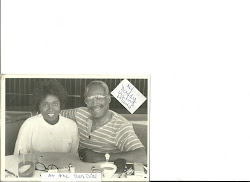Being a recipient of stereotyping and biases can have a
devastating toll on an individual. When
I was in college I experienced racism. I
attended a college that was predominately white. One day I went into the bathroom that I
shared with five other women they were all white. In the bathroom was a large tube of
toothpaste sitting on the counter with an even larger toothbrush on the
toothpaste was a person in black face and it said combats halitosis. I was socked I had this sick feeling in my stomach. I could not believe anyone could be so
mean. The five women I shared the
bathroom with always smiled and spoke to me I could not believe one of them had
such racist feelings toward me. That
experience coupled with some other similar events caused me to leave that
college.
Consequences that children and families with whom I work
with might experience due to my experiencing isms in my own life might be a
lack of engagement by me. If I am
interfacing with individuals that are white I might become standoffish due to
the negative treatment I am experiencing in my own life. I might view certain groups of people as
perpetrators of harm to me and people like me.
I might become evasive toward men because I am experiencing sexism in my
life.
Thankfully I am not experiencing any isms in my life at this
time and am able to service the families and children with an open mind and
open heart. I truly want to become an
anti-bias teacher because I can see the positive affects this type of teaching
will bring to individuals, communities and society as a whole.
